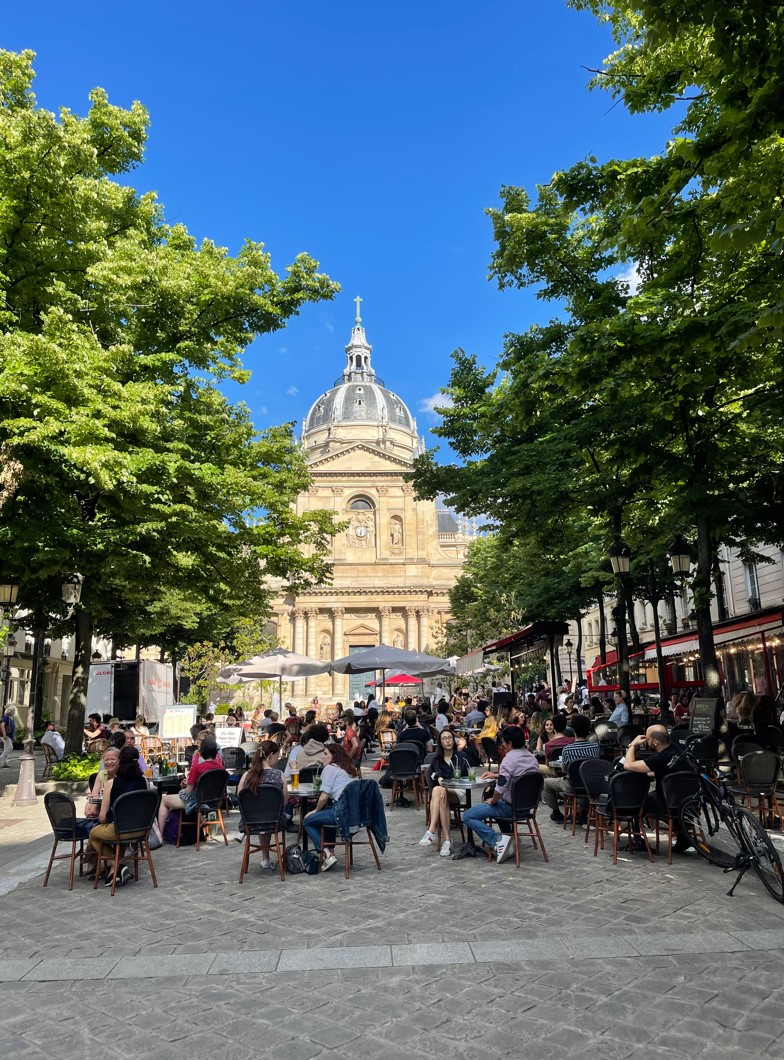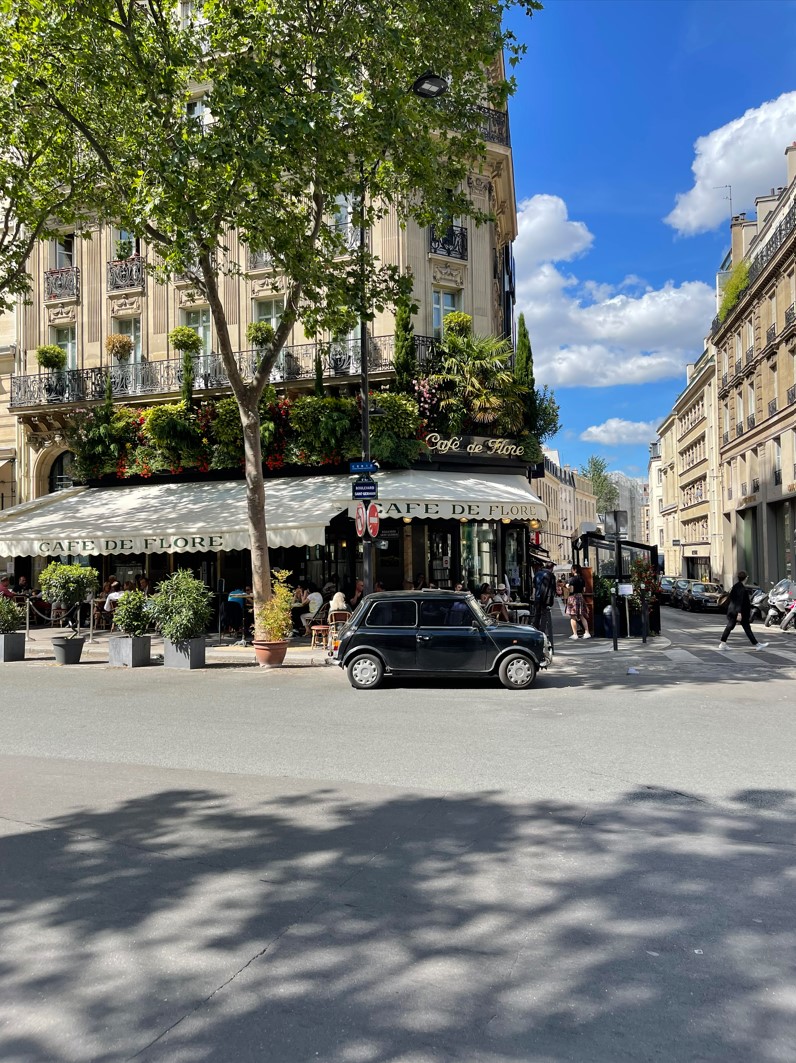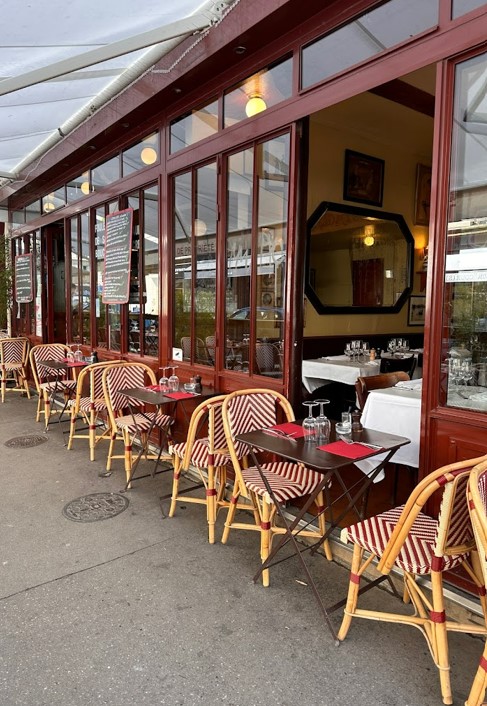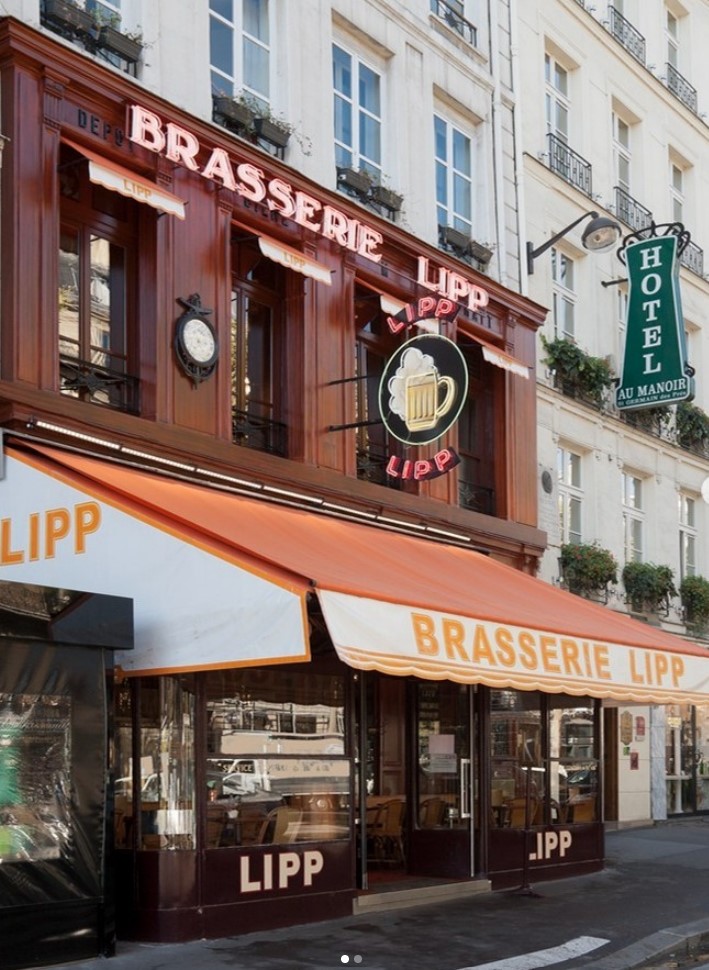If there’s one thing I’ve learned about the French, it’s that they have a knack for classifying everything. I vividly remember my college French professor explaining the distinctions between a café, a brasserie, a restaurant, and more. I was about to visit Paris for the first time, and French culture was completely new to me. So, I thought I’d share a quick overview of what I learned.
In France, there are five main types of dining establishments, ranging from the most casual—a Tabac—to the most formal—a restaurant. Each has its own unique qualities and characteristics.
Tabac
A Tabac is a unique cultural institution, blending elements of a bar, café, and convenience store, typically found on street corners or in neighborhood areas. They usually have a distinctive red neon sign with the word tabac written on it and requires a specific license to sell tobacco products.
Many tabacs also have a small bar area where customers can have a coffee or a drink, but the primary function is retail. It’s a place to purchase cigarettes, smoking accessories, stamps, lottery tickets, newspapers, magazines, and small gifts. The ambiance is often bustling, especially in the morning and late afternoon.
One of the most famous is Le Tabac de la Sorbonne, a mecca for students and locals alike.

Café
A Café is primarily focused on serving drinks (coffee, wine, etc.) and light meals or snacks. It’s a place designed for sitting down, relaxing, and spending time. The ambiance is more about social interaction, relaxation, and leisure. People visit cafés to sit, chat, work, or simply enjoy their time in a leisurely setting.
Cafés have been important intellectual hubs since the 17th century and are frequented by famous writers, artists, and philosophers like Jean-Paul Sartre, Simone de Beauvoir, and Ernest Hemingway. They’re a place of inspiration, political discourse, and literary creation.
If you’ve heard of Paris, chances are you’ve heard of Café de Flore in the heart of Saint Germain des Prés.

Bistrot
A Bistrot is a small, casual restaurant that serves moderately priced simple meals in a relaxed setting. The menu usually consists of classic dishes such as steak-frites, coq au vin, boeuf bourguignon, and cassoulet. The vibe is equally relaxed and often features wooden tables and chairs, checkered tablecloths, and vintage posters or mirrors on the walls. The simple and unpretentious setting reflects the homey nature of the establishment. Service is usually friendly and straightforward, without the formalities of fine dining. Staff are often personable and may engage in casual conversation with diners.
The concept of the bistrot dates back to the 19th century in Paris. There are a few theories about the origin of the term bistrot. The most popular but unproven theory suggests the word bistrot comes from the Russian word “быстро” (pronounced bystro), which means “quickly.” According to this story, Prussian soldiers demanded quick service in cafés and taverns by shouting “Bystro! Bystro!” to the waitstaff.
Another theory suggests the word bistrot comes from a slang term bistraud meaning domestic servant and later a wine merchant. Yet another theory suggests the term has its origins in the word bistrouille in reference to a coffee drink first mixed with milk and then with alcohol.
Located in the 11th arrondissement, Bistrot Paul Bert is renowned for its traditional French cuisine, cozy atmosphere, and charming vintage decor.

Brasserie
A Brasserie is a larger, more formal establishment than a bistro, offering a wide range of food and drinks throughout the day. The menu includes a variety of hearty, traditional French dishes similar to bistrot food, but also typically feature a broad selection of charcuterie as well as seafood and shellfish, such as sole, sea bass, salmon, oysters, crab, lobster, and mussels. Brasseries also have a more extensive drink menu, including a selection of beer and wine. The atmosphere is usually lively and bustling, with a more formal service often featuring white table linens, belle époque decor, and ornate fixtures.
Brasseries became particularly popular in Paris in the late 19th and early 20th centuries. The word brasserie means brewery and is strongly linked to the Alsace region of France, which has a rich brewing tradition influenced by its proximity to Germany. Alsatian brasseries often featured beer alongside traditional regional dishes, such as choucroute garnie (sauerkraut with sausages and meats).
Brasserie Lipp has been an iconic Parisian establishment since it was founded in 1880. Known for its rich history and distinguished clientele, including writers, politicians, and celebrities, Brasserie Lipp offers a quintessential Parisian brasserie experience.

Restaurant
French Restaurants are world renowned for their distinct qualities, which combine culinary excellence, cultural significance, and a commitment to tradition and innovation. They are the birthplace of haute cuisine, a high art of cooking that emphasizes meticulous preparation, presentation, and the use of high-quality ingredients. This tradition has set the standard for fine dining globally. The menu typically offers a range of appetizers, main courses, desserts, and beverages and can be be specialized or varied, depending on the restaurant’s concept.
The restaurant experience is meant to be leisurely and enjoyed over several courses where diners are encouraged to savor their food and engage in conversation. Everything from the table setting and pace of the meal to numerous courses and impeccable attention to detail are a mark of quality. Service is professional and discreet, with a focus on enhancing the dining experience without intruding on it.
French restaurants are deeply connected to the country’s cultural and historical heritage. Many have been in operation for centuries, preserving traditional recipes and culinary practices. The Michelin Guide, which originated in France, plays a significant role in the reputation of French restaurants. Michelin stars are a mark of culinary excellence, and French restaurants are often among the most highly awarded.
Le Grand Véfour, located in the Palais-Royal in Paris, is a historic and opulent restaurant renowned for its exquisite French cuisine and luxurious decor. Established in 1784, it has hosted illustrious figures such as Napoleon Bonaparte and Victor Hugo, making it a symbol of Parisian culinary heritage.




The PRUSSIAN occupation of Paris at the conclusion of the Franco-Prussian war may help to avoid any confusion in your Bistro story. Prussians (Germans from the area surrounding Berlin) used Cossack cavalry from areas that were once called Russia. Otherwise your story rolls out OK. ALSACE & Lorraine were ceded to the Prussians to get them to leave and the animosity contributed to another war you may have heard about in the following century…and then another one.
Thank you – I appreciate your sharing the additional context.
Dear Jeannine,
How do you manage in your so busy schedule to make us learn about what we thought we already knew…
Makes me us want to rush back to Paris
Thank you
Merci for your sweet comment. 🙂
this was very informative and an interesting enjoyable read.
Merci beaucoup!
Very informative. Nice to see all restaurant types compared in one place. Merci!
I will read some of your other articles, too.
Would one also consider adding ‘boullion’ as a type of restaurant? There are a few in Paris, such as Bouillon Julien. Maybe the boullions these days have become more like brasseries than their originals.
Thank you for your comment – I reached out to a French friend on the topic. Neither of us thought of a “bouillon” as a type of restaurant. It’s actually a type of soup, a reduction of vegetables and poultry. But, sure enough, we googled it and the term is now used for restaurants that offer quick meals. These types of restaurants became populaire in the late 19th and early 20th century.